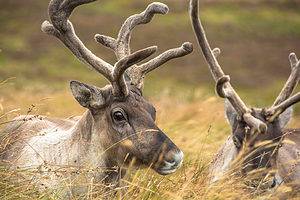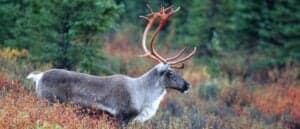If you have a garden filled with vegetables and fruits, chances are you are looking for ways to manage deer encroachment. This is because they are capable of dropping feces up to 15 times daily, which is harmful to humans. Not only are you susceptible to diseases via their dropping, but sick farm pets’ health can become complicated due to their poops.
Would you like to know more about reindeer poop? This article will show you everything you’ve ever wanted to know about reindeer poop.
What Does Reindeer Poop Look Like?
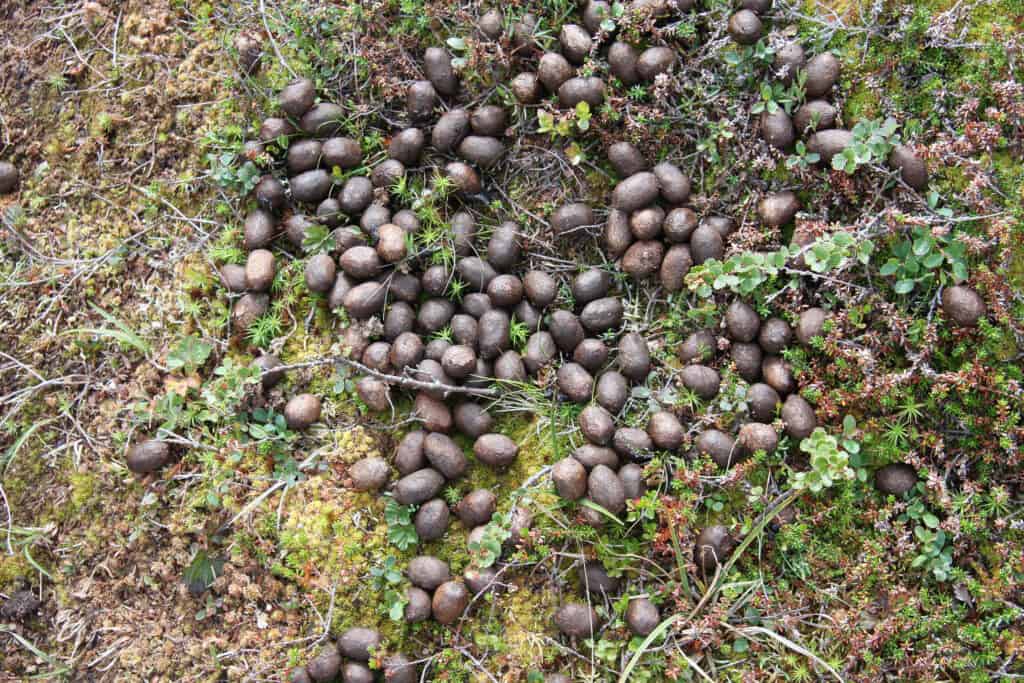
The diet of the reindeer determines the poop’s color. It could be black, brown, and sometimes green.
©Jody./Shutterstock.com
Whether it’s wild or domestic, reindeer produce bullet-like droppings with a point at one end while the other side looks indented. Because the pellets are small, it makes it easier for the animal to excrete them in large numbers. Seeing the waste products can be disgusting, but it is necessary to discharge harmful chemicals consumed through mosses. The diet of the reindeer determines the poop’s color. It could be black, brown, and sometimes green.
If you study the droppings closely, you will know much about their preferred bedding and sitting position. You will generate many insights into their diets by properly examining their feces. A reindeer with firm and pelleted feces is likely consuming leaves, oats, and corn. When this deer species consumes a broadleaf plant, the possible waste product is a long squishier poop.
Hunters find it easy to locate the whereabouts of a reindeer by examining the poop. If it is damp and dark, that could mean that a few of them are nearby. It’s a misconception that the doe’s poop is smaller than that of the buck, which people believe to be bigger. According to animal biologists, it can be tricky to differentiate between the poop of the two sexes. They both defecate scat-shaped feces. What many people believe is that bucks have a longer poop. That is not so in many cases.
What are the Components of Reindeer Poop?
Reindeer poop cluster to appear as a solid pellet. The clustered waste product contains a high level of polybrominated diphenyl ethers (PBDEs). That is because they consume moss with a high concentration of PBDEs. Being one harmful organic pollutant, it becomes difficult for metabolism to take place. Therefore, it comes out with their feces.
Bile and blood cell content are inside deer scat, especially when it comes out black. Research also indicates that their poop is a rich source of nitrogen. It contains about 0.31 pounds of nitrogen.
Is Reindeer Poop Harmful?
According to deer specialists, the droppings cannot cause harm to humans directly when they are examining them. However, it is essential to be very careful to avoid being infected. Prions and malformed proteins are diseases associated with deer scat. Preventive measures, like gloves and a stick, can protect you from unsuspected illness. It is better to keep to safety measures than to get infected carelessly.
It is believed that the animal’s waste products may contain parasites that cause diseases to spread through feces. Prions-caused Chronic Waste Disease (CWD) causes weight loss for the deer and could lead to death if not medically cared for. Farm animals are at greater risk of the concentration of deer dropping than humans. However, some studies suggest the possibility of transmitting E. Coli through the scat.
What Do Deer Eat?
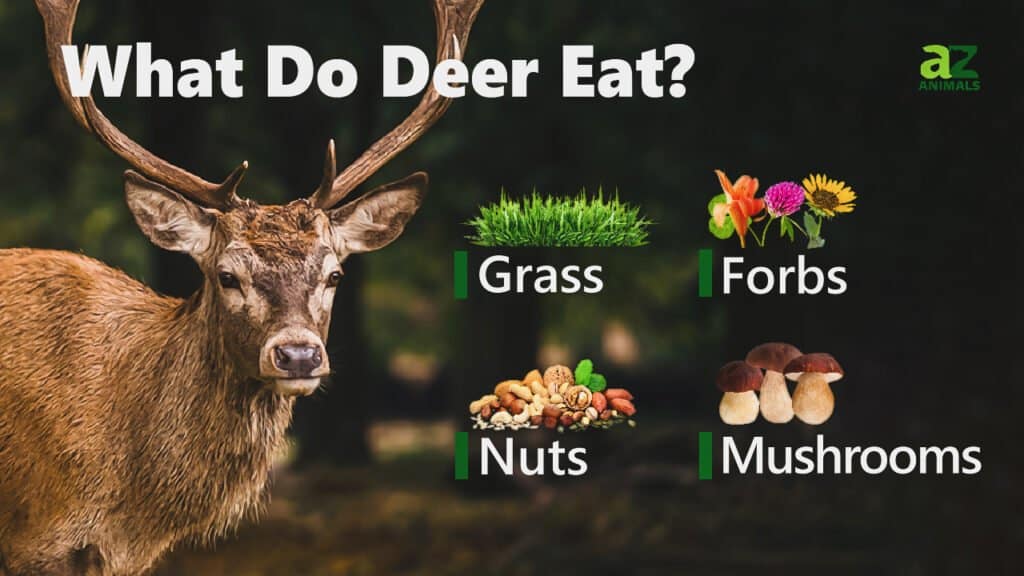
These animals are ruminants and are comfortable eating leaves, grass, and herbs. If they are within a garden filled with vegetables and fruits, they will encroach on your property to eat them. They have four stomachs with different bacteria in each that aid digestion. Deer also consume soybeans, oats, twigs, broadleaf plants, and soft mast. During winter, deer scrap the snow with their hooves for lichen and fungi.
Surprisingly, deer will only eat the nutritious part of whatever they choose to eat during summer. However, when winter comes around, they go with whatever comes their way. So, it is understandable why they scrap snow for mosses.
You can determine the food consumed through an examination of their scat. A deer with firm and pelleted feces is likely consuming leaves, oats, and corn. When a deer consumes a broadleaf plant, the possible waste product is a long squishier poop.
Is Reindeer Poop Suitable as Fertilizer?
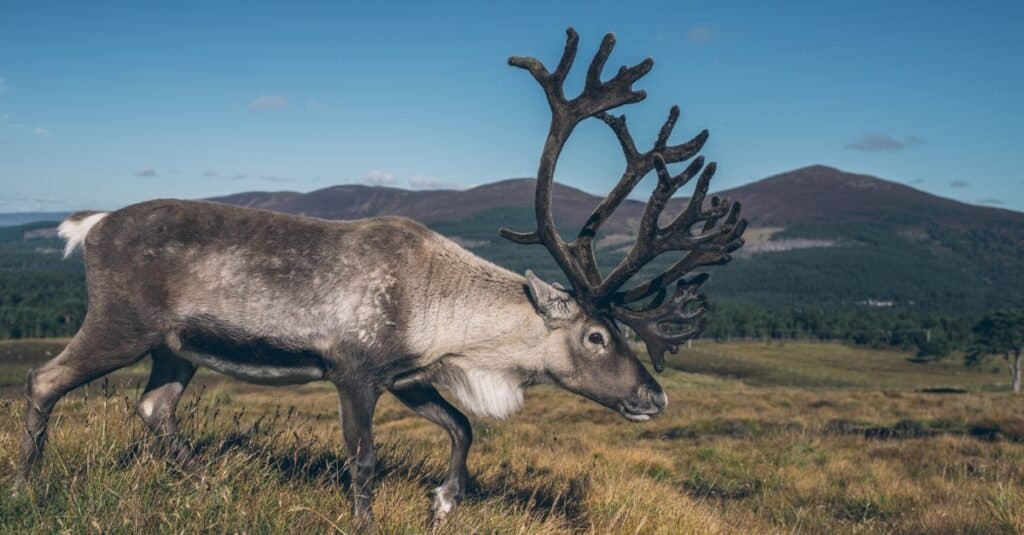
Reindeer droppings are not the best form of manure.
©doliux/Shutterstock.com
No, it is not advisable to use reindeer poop as fertilizer for farming purposes.
That deer dropping is rich in nitrogen does not make it suitable for planting. Research showed that deer have E-Coli bacteria in their digestive systems. Applying their poop as manure may contaminate plants, causing problems for anyone that consumes the infected farm output. It can cause mild to severe illness.
However, E-Coli in manure is controllable through a hot composting process. It involves mixing nitrogen, carbon, water, and air to the optimum level. After the mixture, one must turn it regularly to generate heat. It is necessary to keep the manure at an optimum temperature of 140 degrees Fahrenheit for a minimum of five days.
You can get it done seamlessly with the aid of a composting thermometer. Ensure that you wear gloves whenever you want to begin the process. Also, always separate the fresh manure from the finished compost.
Is Reindeer Poop Useful?
Unlike other animal poop like cow poop, reindeer droppings are not the best form of manure. However, they have other uses. Wild reindeer poop, especially the arctic species, contains flame retardant. A significant component of their dung is polybrominated diphenyl ethers (PBDEs) used in commercial and household products. That shows that they have other benefits other than providing meat to humans.
PBDEs come in high concentrations in their poops due to the consumption of moss. Soil contains flame retardants, which the deer feed on. Their body finds it difficult to break it down, so the ingested chemical comes out with the feces.
The photo featured at the top of this post is © iStock.com/Artpilot
Thank you for reading! Have some feedback for us? Contact the AZ Animals editorial team.



